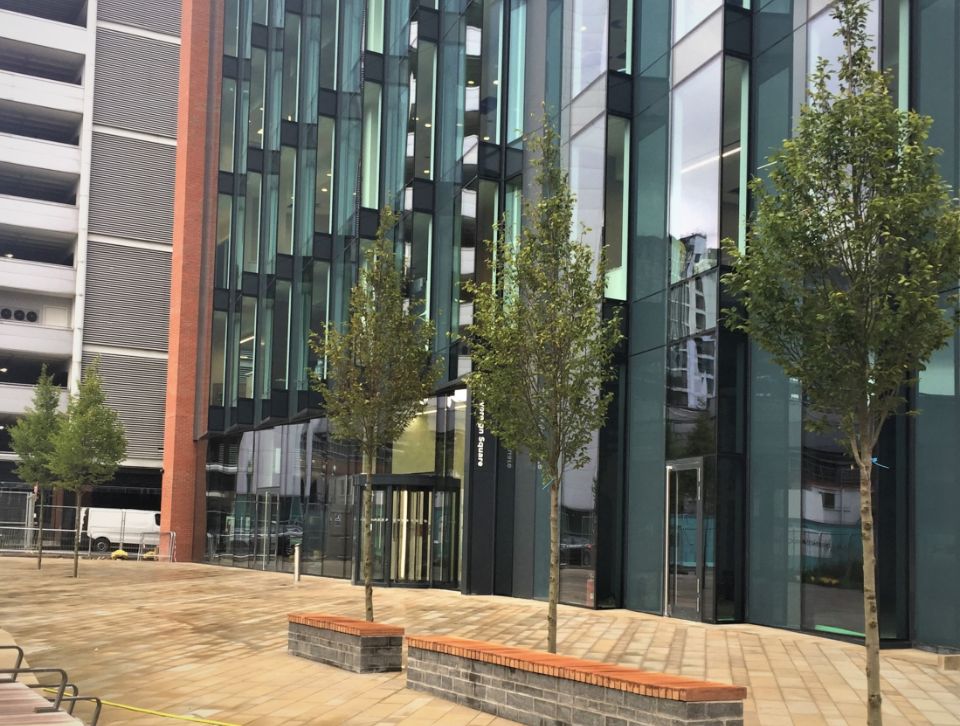Meet regional stormwater requirements using underground bioretention designed for tight urban spaces. The Silva Cell is a stormwater BMP that leverages soil and trees to provide:
The soil contained in the Silva Cell serves two important functions: growing large trees and treating stormwater onsite.
Interception and Evapotranspiration: Large trees intercept and evapotranspire significantly more rain than small trees. For example, a healthy 40 year old Hackberry tree is estimated to provide 14 times as much interception as a 10 year old Hackberry (McPherson et al 2006).
Long-Term Infiltration: As roots grow and then decay, they leave open channels in the soil that restore and/or enhance porosity and infiltration rates. Several studies have found a significant increase in saturated hydraulic conductivity in bioretention with plants as compared to those without (e.g. Lucas and Greenway 2011).
Water Quality Benefits: Vegetation is crucial to many water quality benefits, including removal or sequestration of dissolved nutrients, hydrocarbons, and Total Suspended Solids (TSS).
Plants also slow water flow, allowing more time for sedimentation to occur (Hunt et al 2012).
POLLUTANT REMOVAL LEVELS
Silva Cell compared to typical bioretention systems
Unlike some bioretention systems, which leach nutrients and negatively impact receiving water bodies, Silva Cell systems also provide nutrient removal. Additional low impact development benefits of the system include:
– Water quality
– Peak overflow reduction
– Low/no maintenance
– May use any type of soil
– Efficient use of space
Silva Cells can be used on almost any type of site, including:
– Streets
– Plazas
– Parking areas
– Green roofs/on-structure
– “Break-out” zones.
STORMWATER RESOURCES
SILVA CELL STORMWATER APPROVALS
